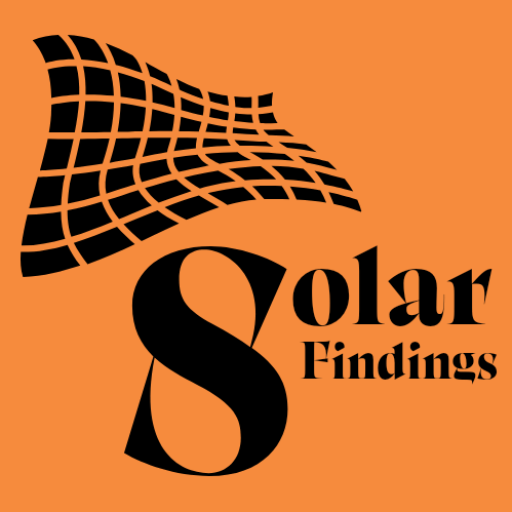Can I sell my excess solar energy UK?
several panel owners in the UK have reached a point where they want to know whether they can sell excess electricity from their solar panels. The short answer to that question is – yes, they can. The UK government, set on achieving its target of net zero greenhouse emissions by 2050, has come up with a variety of schemes to incentivize and promote solar installations among homeowners in the UK, which will be the major focus of this article.
For a detailed breakdown of how to go about it and what are your options, we’ve presented all the information you need in this blog post.
Selling Excess Electricity from Solar Panes in the UK
With a global shift towards renewable energy, all the world’s major nations are catching up and speeding up their transition, with solar and wind applications taking up the majority of their RE mix. The United Kingdom, a historical centre of innovation and change is no different. The proportion of solar installations has grown exponentially in the last decade and as of July 2024, the total installed solar capacity in the UK reached an all-time high of 17GW, majorly comprising residential solar installations across different cities. So, while there are many long-term cost and energy-saving benefits of switching to solar, many homeowners might hesitate a bit because of the upfront costs of installing solar. Here is where selling the excess energy generated comes to your rescue
Since we would be talking about the sale of “excess” energy generated from Solar PV systems, let us first briefly understand how solar panels work-
How do Solar Panels produce energy and, excess energy
Solar Panels are constituted of a number of solar cells, which are usually made out of a semi-conducting material like silicon, selenide, etc., and fitted inside a metal frame. These are placed outdoors–mounted on roofs or the ground at an inclined angle to receive sunlight. The photons in the solar cells, upon exposure to sunlight undergo a photovoltaic reaction and convert the energy from the sun into direct current. As Inverter-Based Resources(IBRs), Solar installations have to be connected to an inverter that converts the direct current into usable Alternating Current(AC) for various applications.
However, we know that solar panels are weather-dependent applications and their output can vary as such. Sometimes, during peak light hours, the panels might end up producing energy to the maximum of their capacity and even more, which is more than(or in excess) of what may be immediately required. If that happens, you usually have two options,
- Battery Storage: Storage solutions can store the excess energy for later use
- Net-metering: If your solar PV system is connected to the grid you can supply the excess energy back to the grid and gain some kind of incentive for it from the local energy authoritative body.
We shall be discussing the second option in depth, and explore the possibilities of net-metering and subsequent benefits in the UK.
How to sell the excess electricity from solar panels?
The UK Government used to offer a Feed-in-Tariff scheme, similar to countries like the USA, Germany, Japan, etc., It was administered by Ofgem and included licensed electricity suppliers paying people for the excess energy they supplied to the grid, generated through renewable sources. However, the scheme was discontinued in 2019. Since then, there have been two ways in which you can sell the excess energy generated by solar panels and earn an incentive. These are:
- Smart-Export Guarantee(SEG)
- Power Purchase Agreements(PPA)
Smart-Export Guarantee(SEG)
The Smart-Export Guarantee(SEG)scheme was started by the UK government in 2020 and provides an opportunity for excess energy generated by small-scale, low-carbon energy-generating systems to be sold to the UK national grid.
This scheme makes it mandatory for all licensed suppliers of energy(SEG Licencees) to offer an export tariff to their customers(SEG Generators) which can be availed through some simple steps.
Who can make use of this scheme?
Any homeowner/building owner with an installation of any of the following systems(not exceeding a capacity of 5MW) can avail of the benefits of the SEG.
– Solar Photovoltaic Panels
– Wind energy
– Micro Combined Heat and Power(Micro-CHP)
– Hydropower
– Anaerobic digestion(AD)
Eligibility criteria:
To sell the excess energy produced by your solar PV system under this system you need to fulfil the following criteria besides the one mentioned above.
– Homeowners who wish to export energy should have a “smart meter”(export meter) installed
– Your solar PV installation should have an MCS Certification to prove that they were installed by a qualified professional.
How to apply for this scheme?
– To qualify for this scheme, you need to become a certified SEG Generator, for which you need to connect with a certified SEG Licensee(Energy supplier), you can check out the list of SEG licenses published by the UK Government annually.
– The meter readings are calculated using the meter readings from the “export/smart meter” that you would send to your respective energy supplier.
Earning Prospects/Amount:
-This scheme does not have set gains or prices for the supply of electricity as that is decided by the individual SEG Licensee, along with the contract length and other things.
-The SEG tariff rates must always be above zero and usually lie anywhere between 1p and 20p per kWh
– On average, you can earn £80-£165 annually by selling energy back to the national grid. However, these rates can vary based on the size of your system and the tariffs offered by the licensees.
If you meet the above-mentioned criteria and want to sign up for this scheme, then you can check out the list of government-recognized SEG licensees attached above and get the ball rolling!
Power Purchase Agreements(PPA
While not directly providing a way to sell excess energy to the national grid and earn benefits, PPAs are a type of contract between a consumer and a supplier of energy, usually set for a long-term period(5-15 years). This agreement involves agreeing on either a fixed price or a price scale with a specified level of escalation for the supply of energy(electricity) to the consumer by a supplier.
This is not a UK-specific scheme and is now offered by most businesses to ensure the long-term budget and price certainty that can benefit both the buyer and the seller.
It can have the following benefits for buyers(users):
- Stable energy costs that can protect them against market volatility and uncertainty
- For organizations, it can help them enhance their green credentials and contribute towards sustainability.
- It can lead to cost-savings in the long term, in case prices lower than the market prices are secured.
To Store Or Sell?
Now, that we have taken a look at the possible ways through which you can sell the excess energy your Solar PV System produces and earn benefits, let us explore an important question- Is it better to store or sell excess energy produced by Solar Panels?
Whether you want to store the excess energy produced by your system or sell it, depends upon your needs and priorities, let us look at the benefits of both storing and selling excess energy-
Benefits of storing excess energy Benefits of selling excess energy
|
Benefits of storing excess energy |
Benefits of selling excess energy |
|
|
|
2. It can help decrease dependence on fossil fuels and reduce carbon emissions, as well as provide more stability to the national grid to handle fluctuations. |
Summing Up
Depending on your priorities and energy needs you can decide to either store or sell the excess energy that your Solar PV System may produce. You can reach out to your local supplier, make sure that they have an SEG license, and then strike a deal about the price that you will be paid for selling the excess electricity!
Frequently Asked Questions
Yes, A solar panel can be installed by yourself by following the instructions. However, necessary precautions need to be taken to prevent any accidents. One may seek professional help if required.
On average, 17 solar panels of 400-watt are required to power a house. However, this number may range from 13-19 considering the fluctuations in sunlight received and utility.
Yes, AC can be run with solar power with capacity ranging from 3kW to 10kW. To know more about it, read this article:
Yes, A solar can be run without a battery. Such a system is known as an on-grid system. In the absence of sunlight, the energy is drawn from the grid because the battery stores solar energy.
Solar panels outperform an inverter. An inverter converts DC to AC from sources like batteries or fuel cells. However, Solar panels produce enormous amounts of DC from solar energy. The solar panel is much better in the long run.
No, AC cable cannot be used for solar panels. A DC cable has a thin coppered wire having minimum resistance, suitable for a direct current
1kW is enough to run a 2-3BHK house having appliances like a TV, refrigerator, AC, charge a laptop, fans, and tube lights. On average, approx. 800 watts can be consumed daily.
Wiring the solar panel to the breaker box prevents the mishap in case of current overload and distributes the electricity. To connect the solar panel to the breaker box, follow the instructions: https://www.youtube.com/watch?v=7HDOnEjLUIU&ab_channel=AhhLifesGood





